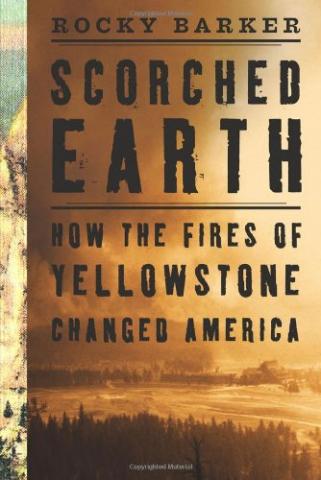But, I must confess that this book is not what I thought it would be when I picked it up. I have enjoyed reading disaster type non-fiction in the past. Books like "The Perfect Storm" and "Endurance: Shackleton's Incredible Voyage" are a couple I've enjoyed. I thought I'd be reading a similar story with a book titled "Scorched Earth: How the Fires of Yellowstone Changed America". I really expected this book to have me in the middle of the fires at Yellowstone in 1988. In fact, the book's prologue puts the reader outside of Old Faithful Inn as the flames approach. But, as chapter 1 begins, we are immediately transported back over 100 years to the conclusion of the Civil War and to General Phil Sheridan.
The next 13 chapters introduce us one by one and chronologically to different folks who have had some influence on the way the United States manages fire and forest resources. In the early chapters, I felt the book bogged down a bit telling the war stories of some early land managers. The book really spoke to me when it focused on wild fires, and the lessons learned from two especially large fires in the early 1900s. By the time the author Rocky Barker describes more recent influences, people like Aldo Leopold and the character of Smokey Bear, the story begins to pick up pace.
 It is not really until the last 50 pages of the book that we are transported back to the world of Yellowstone National Park in 1988. By then, the book has demonstrated a difference between the way fire is managed in the Forest Service and how it is managed in Yellowstone and some other National Parks. Yellowstone had adopted a hands-off approach, a policy to let fires started by lightning burn on their own. But, the summer of '88 was particularly dry, and when the fires started, they did not stop until rains returned in the fall. Barker takes us through that summer in Yellowstone step-by-step, examaning decisions made at the highest level of the Park that had impact on how and where the fires would burn. There comes a point in mid-August where the fires are so powerful, nothing can be done to control them. Barker was there as a reporter for an Idaho Newspaper during the time, and his memories of the event are exciting to read.
It is not really until the last 50 pages of the book that we are transported back to the world of Yellowstone National Park in 1988. By then, the book has demonstrated a difference between the way fire is managed in the Forest Service and how it is managed in Yellowstone and some other National Parks. Yellowstone had adopted a hands-off approach, a policy to let fires started by lightning burn on their own. But, the summer of '88 was particularly dry, and when the fires started, they did not stop until rains returned in the fall. Barker takes us through that summer in Yellowstone step-by-step, examaning decisions made at the highest level of the Park that had impact on how and where the fires would burn. There comes a point in mid-August where the fires are so powerful, nothing can be done to control them. Barker was there as a reporter for an Idaho Newspaper during the time, and his memories of the event are exciting to read.This is about where the story ends, which disappointed me. The subtitle of the book is "How the Fires of Yellowstone Changed America", but the book does very little to explain this change. It is all wrapped up in a single chapter. Barker actually introduced some topics in his epilogue which I feel could have been the larger focus of his book. For instance, I was introduced to the idea that big fires are less influenced by dead woody forest debris, but instead are driven first by weather, climate and wind conditions. He leaves us with the idea that we may see more and larger fires in some Western states as the effects of Global Warming take hold. This is an explosive idea, and deserves more than just a passing reference in the last pages of his book.
Overall, I did enjoy reading this book. I imagine that this book would appeal to others that enjoy reading about wildland management. I do not think it would have the same appeal to a general audience though. It didn't have the same readability as "The Perfect Storm" for instance. Did anyone else get a chance to read this book? What are your thoughts?
Other Reviews:
- Official Book Webpage
- New West Review - includes author interview
- Seattle Post Intelligencer Review





Add comment